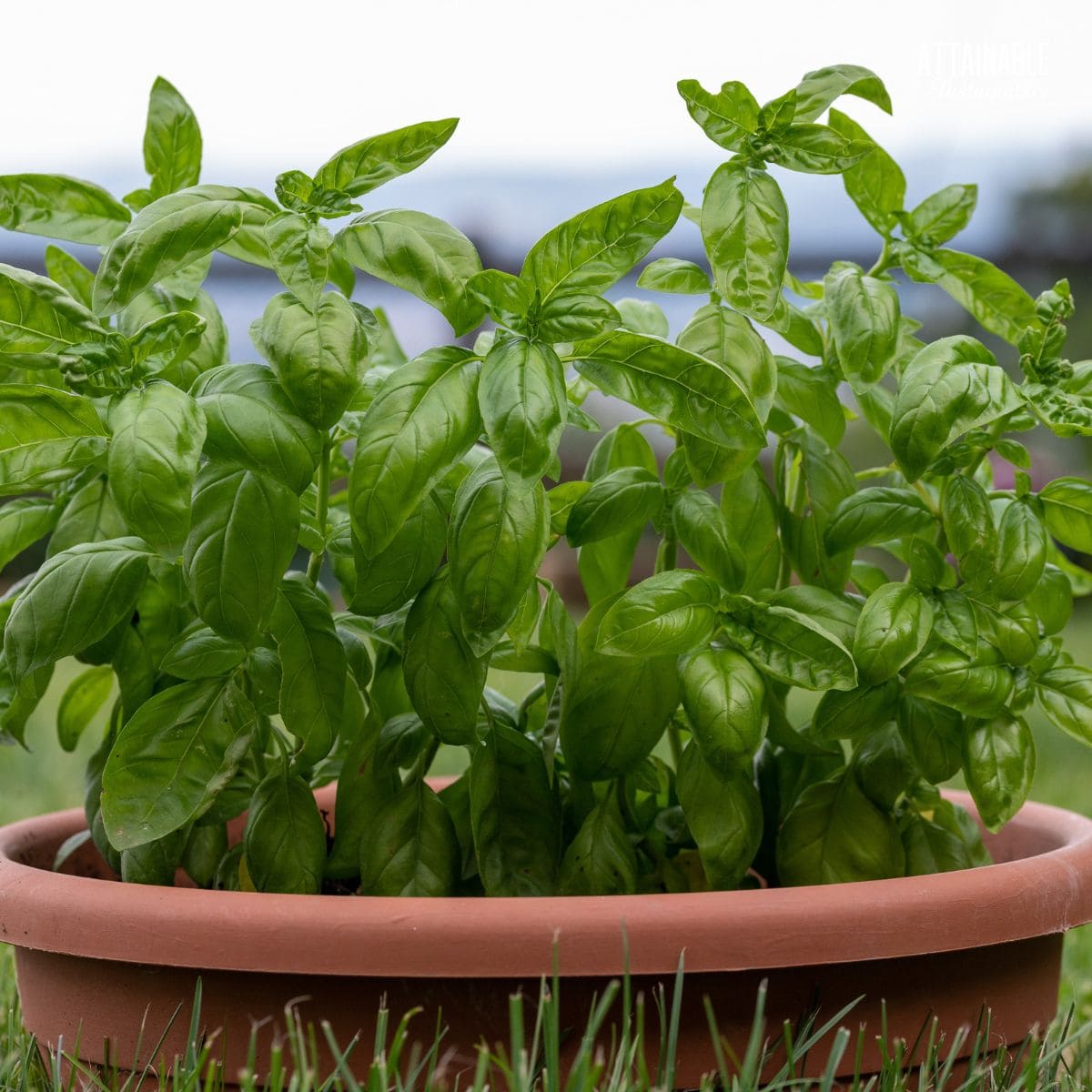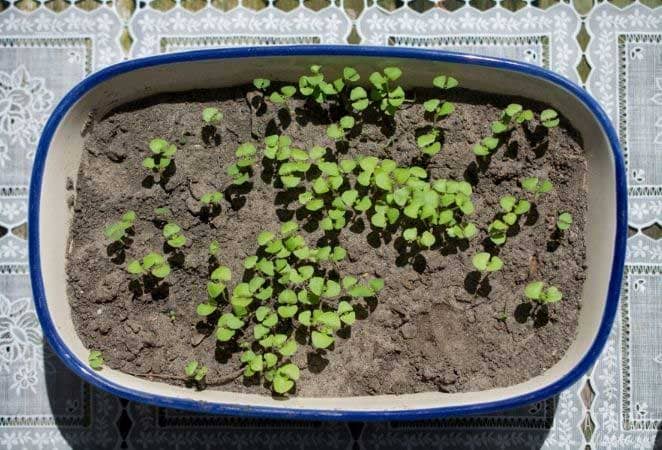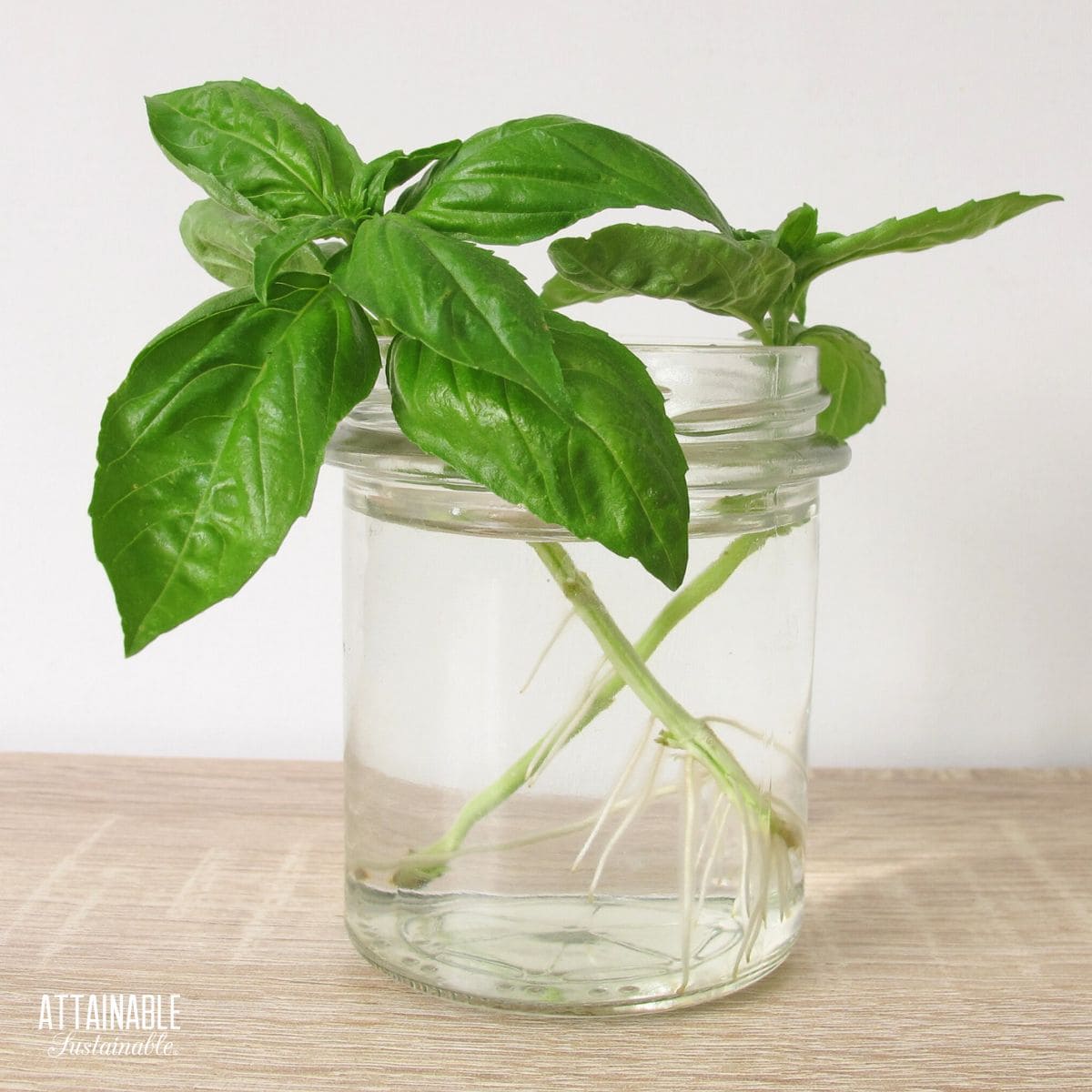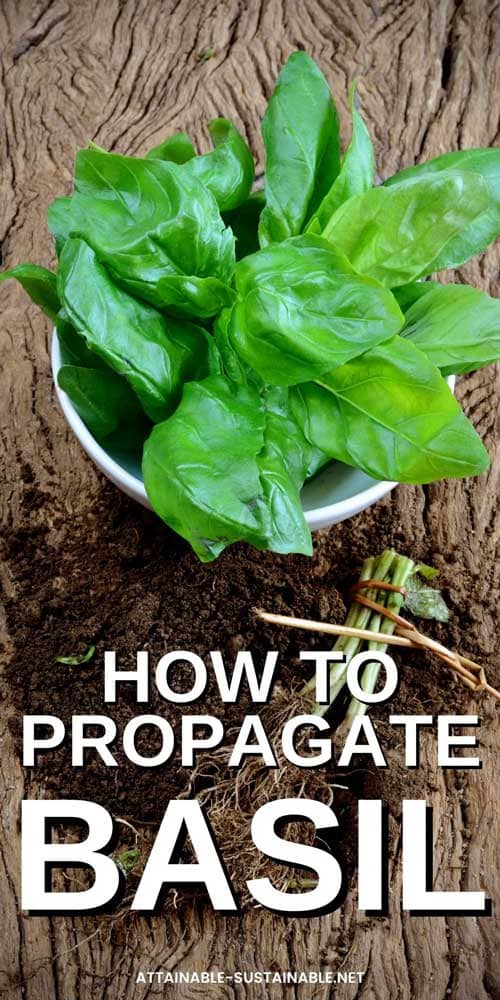Basil is one of my favorite summertime herbs to grow. While you can probably pick up seedlings at the nursery, propagating basil yourself is easy to do.
Originally published June 2021; this post has been updated.
Propagating Basil
The term plant propagation refers to the process of reproducing plants from a parent plant. Planting seeds is a form of plant reproduction. Both are effective ways to grow basil in your garden, but basil propagation is a way to create plants that are somewhat more mature than starting with seedlings.
When you decide you want to plant basil in your garden, you’ll need to choose between purchasing seedlings or starting plants from seed.
If you already have some basil in the garden and want MORE (or if you have a friend who’s growing basil) you can quickly increase the number of plants you have by taking cuttings to create a new basil plant.
New to gardening? Limited on space? The 5-Gallon Garden gives you the skills you need to grow food in the space you have. Get started with your garden today!
Seed Starting
Basil seeds are small and black and produce a seedling that is distinctly different from other garden crops. The first sign of a basil plant emerging from soil is a pair of symmetrical, almost half-circle cotyledon, or first leaves.
Grow Some Greens!
Ready to grow fresh greens, no matter WHERE you live? Sign up for my
FREE quick-start guide and start growing some of your own food!
Basil seeds sprout best in temperatures between 60º and 85ºF. Plant seeds in full sun, covered with a quarter-inch of soil (or potting soil, if you’re growing basil in containers). When the plants are a couple of inches tall, thin to allow about 12″ between plants.
If you opt to start basil seedlings inside for transplanting into the garden later, use a grow light and a heat mat to increase the soil temperature.
- Go here to learn how to harvest basil seeds from mature plants. Free plants next year!
- Go here to learn all about growing and harvesting basil.
 How to Propagate Basil from Cuttings
How to Propagate Basil from Cuttings
Here’s the cool thing about propagating basil from cuttings: You’ll cut the time to harvest in half compared to plants started from seed.
Of course, you’ll have to get cuttings to get started. Here are three ways to consider:
- Purchase a single seedling at the nursery and get it established, then you can start multiple basil plants from the first one.
- Find a friend with an established basil plant and ask if you can take some cuttings.
- Check your grocery store to see if they sell fresh herbs.
However you do it, you’ll end up with a multitude of free plants!
Rooting Basil Cuttings in Water
If you’re starting with grocery store basil, choose the freshest cuttings you can. When taking basil cuttings from a mother plant, cut a 6″ stem from a basil plant, just below a leaf node. Choose a fleshy stem that has not flowered yet. Roots will sprout from the nodes, where the leaves emerge from the stem.
Carefully remove the leaves at these nodes and place the cuttings in water. You may end up with several nodes under water; roots should sprout from all of them.
While it’s not entirely necessary, if you have some of this homemade rooting hormone, you can add a tablespoon or so to the water.
Change the water every couple of days. In about two to three weeks, when the roots are a couple of inches long, move the rooted basil cutting to soil — either in a planter filled with potting mix or directly in the garden — and water it in.
You’ll be able to start harvesting leaves from the new basil plants in another few weeks, ready for lemon basil sauce, fresh pesto or other delicious basil recipes.




 How to Propagate Basil from Cuttings
How to Propagate Basil from Cuttings





Thank you
You’re welcome 🙂
Very informative, really enjoyed reading this and very helpful.
I’m so glad it’s been helpful!